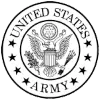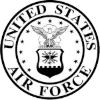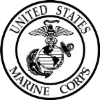Available 24/7
Professional Instruction
Free Training Materials






Course Details
The Introduction to Microsoft Azure for IT Professionals - 10979 course is a 2-day course that is designed to teach students about the underlying knowledge required by those who will be evaluating Microsoft Azure.
Students will be introduced to the principles of cloud computing. The course will familiarize students with how these principles have been implemented in Microsoft Azure. The course will also explain how to implement the core Azure infrastructure, consisting of virtual networks and storage. Students will also learn how to create the most common Azure services, including Azure Virtual Machines, Web Apps, and Azure SQL Database. The course will finish up by describing features of Azure AD and methods of integrating it with on-premises Active Directory.
Topics covered in the course include:
- Describe cloud computing, Azure, and Azure subscriptions.
- Use Azure PowerShell, the Azure Software Development Kit (SDK), and the Azure command-line interface (CLI) to manage Azure subscriptions.
- Create and configure virtual machines in Azure, and manage their disks.
- Create, configure, and monitor web apps in Azure and deploy Azure platform as a service (PaaS) cloud services.
- Create and configure Azure virtual networks.
- Create, manage, and configure cloud storage in Azure.
- Use Azure SQL Database to create, configure, and manage SQL databases.
- Create and manage Azure AD.
Target Student:This course is intended for students who want to evaluate deploying, configuring, and administering services and virtual machines (VMs) by using Azure.
Students should have the following prerequisite experience:
- Understanding of how to deploy websites
- An understanding of virtualization
- An understanding of Active Directory concepts, including domains, users, and domain controllers
- An understanding of database concepts, including tables and simple queries
Section 1: Getting Started with Microsoft Azure
This section dicusses the features of Microsoft Azure and the services it provides. The section also explains how to Managing Microsoft Azure by using the Azure portal, Visual Studio, and SQL Server Management Studio. In addition, the section dicusses how to Managing subscriptions and billing.
Lessons
• What Is Cloud Computing?
• What Is Azure?
• Managing Azure
• Subscription Management and Billing
Lab : Using the Microsoft Azure Portal
• Adding a Co-Administrator
• Viewing Billing Data
Section 2: Websites and Cloud Services
This section explains the procedures for creating and configuring websites and cloud services. The section also dicusses how to Deploying and Monitoring websites.
Lessons
• Creating and Configuring Websites
• Deploying and Monitoring Websites
• Creating and Deploying Cloud Services
Lab : Websites and Cloud Services
• Creating a WordPress Website
• Creating a Cloud Service
Section 3: Virtual Machines
This section dicusses how to Creating and Configuring virtual machines and disks.
Lessons
• Creating and Configuring Virtual Machines
• Configuring Disks
Lab : Creating a Virtual Machine in Microsoft Azure
• Creating a Virtual Machine from the Gallery
• Verifying the functionality of the Virtual Machine
• Attaching a Data Disk
Section 4: Virtual Networks
This section provides an overview of virtual networks and also dicusses the procedure to Creating one. The section then dicusses a point-to-site VPN and explains how to set up one.
Lessons
• Getting Started with Virtual Networks
• Creating a Virtual Network
• Implementing Point-to-Site Networks
Lab : Creating a Virtual Network
• Creating a Virtual Network
• Creating Virtual Machines from the Gallery
• Adding Point-to-Site Connectivity
Section 5: Cloud Storage
This section dicusses cloud storage features such as azure storage accounts, BLOBs, tables, and queues. The section also dicusses how to Creating and Managing storage.
Lessons
• Understanding Cloud Storage
• Creating and Managing Storage
Lab : Configuring Azure Storage
• Creating an Azure Storage Account
• Creating and Managing Blobs
• Upload Files
Section 6: Microsoft Azure Databases
This section provides an overview of the relational database deployment options. The section also dicusses how to Creating and connect SQL databases.
Lessons
• Understand Relational Database Deployment Options
• Creating and Connect to SQL Databases
Lab : Creating an SQL Database
• Creating a New SQL Database in Azure and Configuring SQL Server Firewall Rules
• Add Data to an SQL Database in Azure by Using SQL Server Management Studio
Section 7: Azure Active Directory
This section dicusses how to Managing Active Directory objects and how they can be used for identity and access management. The section also dicusses how to Configuring authentication by using multi-factor authentication and single sign-on.
Lessons
• Managing Azure AD Objects
• Managing Authentication
Lab : Creating Users in Azure Active Directory
• Creating an Azure AD Directory
• Creating Users in Azure Active Directory
Section 8: Microsoft Azure Management Tools
This section provides an overview of the tools that you can use to Managing Microsoft Azure such as Azure PowerShell, Visual Studio, and Xplat CLI.
Lessons
• Azure PowerShell
• The Azure SDK and the Azure Cross-Platform Command-Line Interface
Lab : Using Microsoft Azure Management Tools
• Use the Azure PowerShell sections
• Use the Azure Cross-Platform Command-Line Interface
Please check the course description to find prerequisite information.
MOC On-Demand: 10979-Introduction to Microsoft Azure for IT Professionals
On-Demand Training Course
90/month licence
- 24/7 Access
- Hands-On Practice Exercises
- Free Repeats
- Professional Instruction
Testimonials
This was the class I needed.
The instructor Jeff took his time and made sure we understood each topic before moving to the next. He answered all of our questions, and I don't know about the rest of the students, but was very pleased with this experience.
I finally understand how to use Excel.
-Amanda T (Yale New Haven Hospital).
Great class!
We were able to cover a lot of information in one day without getting overwhelmed.
-Maria R (Microsoft).
Free Repeats
Learn At Your Pace
No Travel
Professional Instruction
Affordable Pricing
Group Discounts

